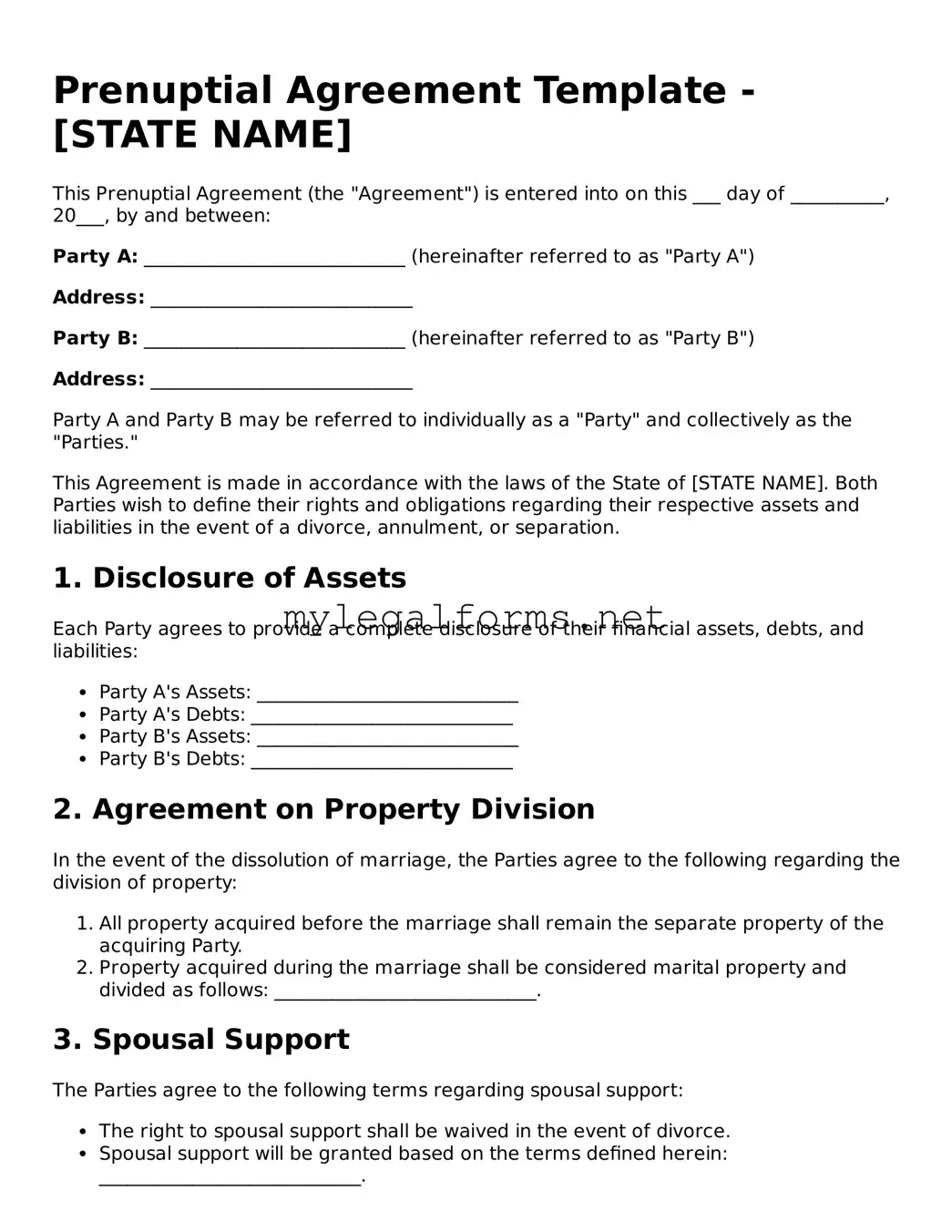Prenuptial Agreement Template - [STATE NAME]
This Prenuptial Agreement (the "Agreement") is entered into on this ___ day of __________, 20___, by and between:
Party A: ____________________________ (hereinafter referred to as "Party A")
Address: ____________________________
Party B: ____________________________ (hereinafter referred to as "Party B")
Address: ____________________________
Party A and Party B may be referred to individually as a "Party" and collectively as the "Parties."
This Agreement is made in accordance with the laws of the State of [STATE NAME]. Both Parties wish to define their rights and obligations regarding their respective assets and liabilities in the event of a divorce, annulment, or separation.
1. Disclosure of Assets
Each Party agrees to provide a complete disclosure of their financial assets, debts, and liabilities:
- Party A's Assets: ____________________________
- Party A's Debts: ____________________________
- Party B's Assets: ____________________________
- Party B's Debts: ____________________________
2. Agreement on Property Division
In the event of the dissolution of marriage, the Parties agree to the following regarding the division of property:
- All property acquired before the marriage shall remain the separate property of the acquiring Party.
- Property acquired during the marriage shall be considered marital property and divided as follows: ____________________________.
3. Spousal Support
The Parties agree to the following terms regarding spousal support:
- The right to spousal support shall be waived in the event of divorce.
- Spousal support will be granted based on the terms defined herein: ____________________________.
4. Governing Law
This Agreement shall be governed by and interpreted in accordance with the laws of the State of [STATE NAME].
5. Miscellaneous Provisions
This Agreement constitutes the entire understanding between the Parties. Any amendments must be in writing and signed by both Parties.
IN WITNESS WHEREOF, the Parties hereto have executed this Prenuptial Agreement as of the date first above written.
______________________________
Signature of Party A
______________________________
Signature of Party B
______________________________
Date
